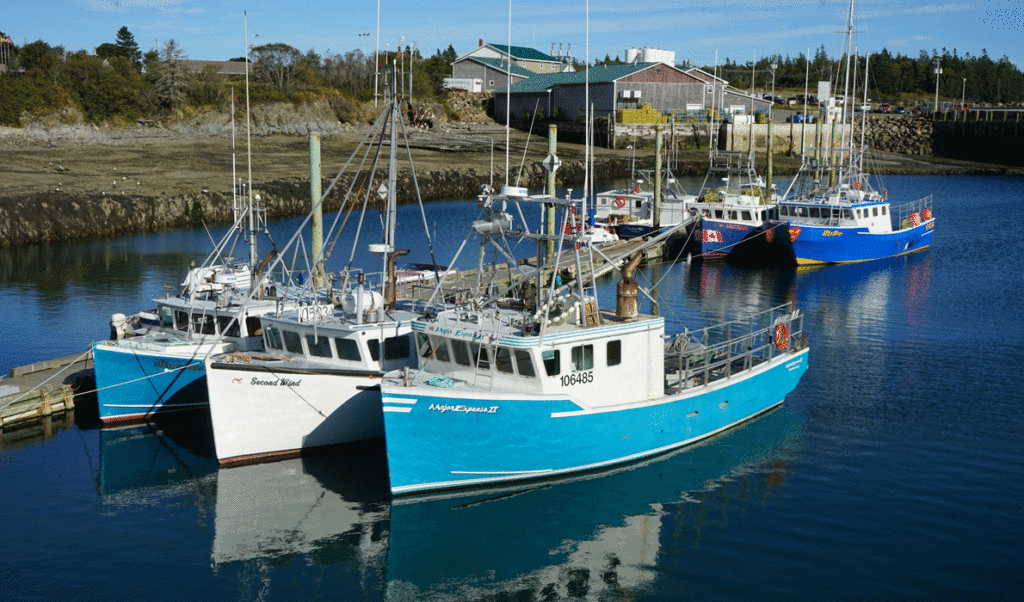By Tom Groening
One of my college professors, Louis Simpson, won the Pulitzer Prize for poetry in 1964. He was a wonderful teacher, and I sought out his work, even after graduating.
One of his poems from the early 1980s has lingered in my memory. It’s from the perspective of an educated professional whose annual fishing trips to Alaska sustain him through the rest of his dull, soul-numbing year.
In the poem, the man is baffled by the local guy he sees passed out drunk in the street in an Alaskan village—how could this man be so miserable in such a wonderful place?
Mainers will understand the wisdom embedded in that image, and remind us of people we see in summer who say, “Oh, I’d love to live here!” That romantic view of a place is, of course, tied to visiting it in the height of summer while on vacation.
I suppose I’m guilty of that when it comes to Canada.
We vacationed in Prince Edward Island with our children in the late 1990s and early 2000s. It’s a beautiful place, and looks like Aroostook County has been cut from Maine and dropped in the North Atlantic. The pastoral scenery rolls on for miles, and the shore is rimmed by red, sandstone cliffs crumbling into red sand beaches. Its largest town is Charlottetown, the size of Bangor, which has large parks and plenty of waterfront access. The Gulf Stream, which takes a hard-right turn at Cape Cod, swings by PEI’s north shore, so the ocean is 72 degrees in summer.
Quebec City is another favorite. I’ve never been to Europe, but this city, one of the oldest in North America, drips with Old World history and architecture, perched high on a rocky mount over the St. Lawrence River. The old, walled part of the city is like Portland’s Old Port, but two or three times its size.
We’ve had short visits to Nova Scotia’s Bay of Fundy side—the Digby Peninsula and Annapolis Royal—and to the Atlantic side, from Yarmouth to Halifax.
Our October issue included a first-person account by Swan’s Island’s Donna Wiegle of her motorcycle trip along the Gaspé Peninsula, which follows the mouth of the St. Lawrence through New Brunswick and Quebec. That’s on my list.
Newfoundland also calls to me—villages with no roads to the interior, linked only by marine routes. The city of St. John’s, which seems to have one foot in Europe and one in North America.
By late August, as summer waned, I began craving a solo adventure, and that big island off Maine’s Bold Coast beckoned. Grand Manan is closer to Lubec than to Blacks Harbour, New Brunswick, where the ferry departs, but it is in Canada. In my late-September visit there—inspired in part by contributor Kelli Park’s story and photos, in this issue—it seemed to have roots in both Maine and Maritime Canada.
There are five little fishing villages along the southeastern shore. As is the case in other Canadian ports, the government-built piers are substantial and well-maintained. Hoists, bait storage, parking, and other amenities are included.
Salmon aquaculture is well-established there, and I noticed Cooke Aquaculture buildings scattered along the shore.
Kelli’s story looks into the island’s efforts to lure more tourists. Though it was only late September, the visitor center was closed all four days I was there, as were a couple of eateries. The northwest side of the island, largely undeveloped, has dramatic scenery in its 300-foot cliffs, and I did a fair amount of hiking there (look for my photos on The Working Waterfront’s Facebook page).
In one of my political fantasies, the three northern New England states join Quebec and the Maritime provinces as a component of a confederation of other U.S. and Canadian regions. And another time, I’ll tell you about my love for Canadian musicians—The Band, Bruce Cockburn, Cowboy Junkies, Blue Rodeo, Joni Mitchell, Neil Young… Oh, Canada!
Tom Groening is editor of The Working Waterfront.





